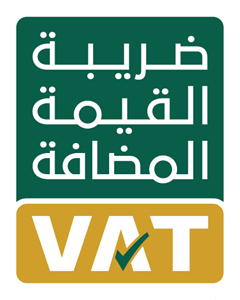Hands-on projects are experiential learning opportunities that allow students to apply their knowledge in real-world scenarios. Here are several reasons why they are crucial in education:
Hands-On Projects and Final Assessment in Learning
.

In today’s educational landscape, traditional teaching methods are increasingly complemented by hands-on projects and final assessments. These approaches not only engage students but also provide practical applications of the theoretical concepts they learn in the classroom. This blog will delve into the significance of hands-on projects and final assessments, offering insights into their benefits and how they can be effectively implemented in various learning environments.
1. The Importance of Hands-On Projects
1.1 Enhancing Engagement
- Active Learning: Hands-on projects require active participation, which increases student engagement. When students work on projects, they are more likely to stay focused and invested in their learning.
- Motivation: Creating something tangible can motivate students to explore subjects more deeply. The satisfaction of completing a project can spark curiosity and a desire to learn more.
1.2 Developing Critical Skills
- Problem-Solving: Hands-on projects often involve challenges that require students to think critically and develop solutions, enhancing their problem-solving skills.
- Collaboration: Many projects are designed for group work, fostering teamwork and communication skills. Students learn to collaborate effectively, share ideas, and respect diverse perspectives.
1.3 Promoting Creativity
- Innovation: Projects encourage students to think outside the box, promoting creativity and innovation. They can experiment with different ideas and approaches, leading to unique solutions.
- Personal Expression: Through hands-on projects, students can express their individuality and interests, leading to more meaningful learning experiences.
2. Types of Hands-On Projects
There are various types of hands-on projects that can be implemented across different subjects:
2.1 STEM Projects
- Science Experiments: Conducting experiments helps students grasp scientific concepts while developing analytical skills.
- Engineering Challenges: Building structures or creating prototypes allows students to apply engineering principles in a practical context.
2.2 Art and Design Projects
- Creative Arts: Students can explore various art forms, such as painting, sculpture, or digital design, to express their creativity.
- Design Thinking: Projects that involve design thinking encourage students to identify problems and create innovative solutions through art and design.
2.3 Community Projects
- Service Learning: Engaging in community service projects allows students to apply their learning while making a positive impact on their community.
- Environmental Projects: Projects focused on sustainability and environmental awareness can foster a sense of responsibility and stewardship among students.
3. The Role of Final Assessments
Final assessments are essential for evaluating student understanding and the effectiveness of the learning process. Here are some key aspects of final assessments:
3.1 Measuring Learning Outcomes
- Knowledge Retention: Final assessments help determine how well students have retained and understood the material covered during the course.
- Skill Application: Assessments can evaluate students’ ability to apply their knowledge in practical situations, reflecting their readiness for future challenges.
3.2 Providing Feedback
- Constructive Feedback: Final assessments provide opportunities for teachers to give feedback to students, helping them identify areas for improvement and reinforcing their strengths.
- Reflection: Assessments encourage students to reflect on their learning journey, promoting self-assessment and personal growth.
4. Effective Assessment Strategies
To make final assessments effective, consider the following strategies:
4.1 Diverse Assessment Formats
- Projects and Presentations: Instead of traditional exams, consider using projects or presentations as a form of assessment. This allows students to demonstrate their understanding creatively.
- Portfolios: Encourage students to create portfolios showcasing their work throughout the course, highlighting their growth and achievements.
4.2 Rubrics and Clear Criteria
- Assessment Rubrics: Develop clear rubrics that outline the criteria for success. This helps students understand expectations and allows for more objective grading.
- Peer Assessment: Incorporate peer assessments to encourage collaboration and critical thinking. Students can learn from each other’s perspectives and provide valuable feedback.
5. Conclusion
Hands-on projects and final assessments are integral components of a dynamic and effective learning experience. By engaging students in active learning and providing meaningful opportunities for evaluation, educators can foster a deeper understanding of the material while developing essential skills for the future. Implementing diverse project formats and assessment strategies can enhance student engagement, motivate creativity, and ultimately lead to more successful learning outcomes. Embrace the power of hands-on projects and final assessments to create a richer educational experience for all students.





